Introduction to Circuit Board Components
An electronic circuit board, also known as a printed circuit board (PCB), is the foundation of modern electronic devices. It is a flat board made of insulating material, such as fiberglass or plastic, with conductive pathways etched onto its surface. These pathways connect various electronic components, allowing them to function together as a complete circuit. In this article, we will explore 15 basic components commonly found on electronic circuit boards and their roles in making electronic devices work.
1. Resistors
What are Resistors?
Resistors are passive electronic components that oppose the flow of electrical current in a circuit. They are used to control the amount of current flowing through a specific part of the circuit, as well as to create voltage drops and divide voltages.
Types of Resistors
There are several types of resistors, including:
- Carbon Composition Resistors
- Carbon Film Resistors
- Metal Film Resistors
- Wire Wound Resistors
- Surface Mount Resistors
Resistor Values and Tolerance
Resistors are available in a wide range of values, typically measured in ohms (Ω). The resistance value is often indicated by a color code or printed directly on the resistor. Resistors also have a tolerance rating, which represents the accuracy of the resistance value.
| Tolerance | Color Band |
|---|---|
| ±1% | Brown |
| ±2% | Red |
| ±5% | Gold |
| ±10% | Silver |
| ±20% | None |
2. Capacitors
What are Capacitors?
Capacitors are passive electronic components that store electrical energy in an electric field. They are used for various purposes, such as filtering, coupling, decoupling, and energy storage.
Types of Capacitors
There are several types of capacitors, including:
- Ceramic Capacitors
- Electrolytic Capacitors
- Tantalum Capacitors
- Film Capacitors
- Variable Capacitors
Capacitor Values and Voltage Rating
Capacitors are available in a wide range of values, typically measured in farads (F). The capacitance value is often printed directly on the capacitor or indicated by a code. Capacitors also have a voltage rating, which represents the maximum voltage that can be applied across the capacitor without causing damage.

3. Inductors
What are Inductors?
Inductors are passive electronic components that store electrical energy in a magnetic field. They are used for various purposes, such as filtering, tuning, and energy storage.
Types of Inductors
There are several types of inductors, including:
- Air Core Inductors
- Ferrite Core Inductors
- Iron Core Inductors
- Toroidal Inductors
- Surface Mount Inductors
Inductor Values and Current Rating
Inductors are available in a wide range of values, typically measured in henries (H). The inductance value is often printed directly on the inductor or indicated by a code. Inductors also have a current rating, which represents the maximum current that can flow through the inductor without causing damage.
4. Diodes
What are Diodes?
Diodes are semiconductor devices that allow current to flow in only one direction. They are used for various purposes, such as rectification, protection, and switching.
Types of Diodes
There are several types of diodes, including:
- Rectifier Diodes
- Zener Diodes
- Schottky Diodes
- Light Emitting Diodes (LEDs)
- Photodiodes
Diode Specifications
Diodes have several important specifications, such as:
- Forward Voltage Drop
- Reverse Breakdown Voltage
- Maximum Forward Current
- Reverse Recovery Time
5. Transistors
What are Transistors?
Transistors are semiconductor devices that can amplify or switch electronic signals. They are the building blocks of modern electronics and are used in a wide range of applications, from simple circuits to complex integrated circuits.
Types of Transistors
There are two main types of transistors:
- Bipolar Junction Transistors (BJTs)
- NPN Transistors
- PNP Transistors
- Field Effect Transistors (FETs)
- Junction Field Effect Transistors (JFETs)
- Metal Oxide Semiconductor Field Effect Transistors (MOSFETs)
Transistor Specifications
Transistors have several important specifications, such as:
- Current Gain (hFE)
- Collector-Emitter Voltage (VCE)
- Collector Current (IC)
- Switching Speed
6. Integrated Circuits (ICs)
What are Integrated Circuits?
Integrated circuits (ICs) are miniaturized electronic circuits that are fabricated on a single semiconductor substrate. They contain a large number of transistors, diodes, resistors, and other components, all interconnected to perform a specific function.
Types of Integrated Circuits
There are several types of integrated circuits, including:
- Linear ICs (e.g., operational amplifiers, voltage regulators)
- Digital ICs (e.g., logic gates, microprocessors, memory chips)
- Mixed-signal ICs (e.g., analog-to-digital converters, digital-to-analog converters)
- Application-specific ICs (ASICs)
IC Packages
Integrated circuits are available in various package types, such as:
- Dual In-line Package (DIP)
- Small Outline Integrated Circuit (SOIC)
- Quad Flat Package (QFP)
- Ball Grid Array (BGA)
7. Connectors
What are Connectors?
Connectors are components that allow electronic devices or circuits to be connected to each other or to external devices. They provide a means for transferring signals, power, or data between different parts of a system.
Types of Connectors
There are numerous types of connectors, each designed for specific applications. Some common types include:
- Pin Headers and Sockets
- D-Sub Connectors
- USB Connectors
- RJ45 Connectors (Ethernet)
- Audio Connectors
- Power Connectors
Connector Specifications
Connectors have several important specifications, such as:
- Number of Pins or Contacts
- Pitch (distance between pins)
- Current Rating
- Voltage Rating
- Mating Cycles (durability)
8. Switches
What are Switches?
Switches are mechanical or electronic components that can make or break an electrical connection. They are used to control the flow of current in a circuit, allowing users to turn devices on or off, select different functions, or adjust settings.
Types of Switches
There are several types of switches, including:
- Toggle Switches
- Pushbutton Switches
- Slide Switches
- Rotary Switches
- DIP Switches
- Reed Switches
Switch Specifications
Switches have several important specifications, such as:
- Number of Poles and Throws
- Contact Material
- Actuator Type
- Current Rating
- Voltage Rating
- Mechanical Life (number of cycles)
9. Relays
What are Relays?
Relays are electrically operated switches that use an electromagnet to mechanically control the switching of electrical contacts. They allow a low-power signal to control a higher-power circuit, providing electrical isolation between the control and the controlled circuits.
Types of Relays
There are several types of relays, including:
- Electromechanical Relays
- Solid State Relays
- Reed Relays
- Time Delay Relays
- Contactors
Relay Specifications
Relays have several important specifications, such as:
- Coil Voltage and Current
- Contact Rating (current and voltage)
- Contact Arrangement (SPST, SPDT, DPDT, etc.)
- Switching Time
- Mechanical Life (number of cycles)
10. Transformers
What are Transformers?
Transformers are passive electrical devices that transfer electrical energy between two or more circuits through electromagnetic induction. They are used to step up or step down AC voltages, provide electrical isolation, or match impedances between circuits.
Types of Transformers
There are several types of transformers, including:
- Power Transformers
- Audio Transformers
- Pulse Transformers
- Isolation Transformers
- Autotransformers
Transformer Specifications
Transformers have several important specifications, such as:
- Primary and Secondary Voltage Ratings
- Power Rating (VA or Watts)
- Frequency Range
- Turns Ratio
- Efficiency
- Insulation Class
11. Crystals and Oscillators
What are Crystals and Oscillators?
Crystals and oscillators are components that generate precise frequency references for timing and synchronization in electronic circuits. They are used in various applications, such as clocks, microprocessors, and communication systems.
Types of Crystals and Oscillators
There are several types of crystals and oscillators, including:
- Quartz Crystals
- Ceramic Resonators
- MEMS Oscillators
- Voltage-Controlled Oscillators (VCOs)
- Temperature-Compensated Crystal Oscillators (TCXOs)
Crystal and Oscillator Specifications
Crystals and oscillators have several important specifications, such as:
- Frequency
- Frequency Stability
- Load Capacitance
- Drive Level
- Output Waveform
- Operating Temperature Range
12. Sensors
What are Sensors?
Sensors are devices that detect and respond to various physical or environmental stimuli, such as light, temperature, pressure, motion, or chemical substances. They convert these stimuli into electrical signals that can be processed by electronic circuits.
Types of Sensors
There are numerous types of sensors, each designed to detect specific stimuli. Some common types include:
- Temperature Sensors (e.g., thermistors, thermocouples)
- Light Sensors (e.g., photoresistors, photodiodes)
- Pressure Sensors
- Accelerometers
- Gyroscopes
- Humidity Sensors
- Gas Sensors
Sensor Specifications
Sensors have several important specifications, such as:
- Sensitivity
- Accuracy
- Resolution
- Response Time
- Operating Range
- Output Type (analog or digital)
13. Fuses and Circuit Breakers
What are Fuses and Circuit Breakers?
Fuses and circuit breakers are protective devices that interrupt the flow of current in a circuit when it exceeds a predetermined level. They are used to protect electronic components and wiring from damage caused by overcurrent conditions, such as short circuits or overloads.
Types of Fuses and Circuit Breakers
There are several types of fuses and circuit breakers, including:
- Cartridge Fuses
- Blade Fuses
- Surface Mount Fuses
- Resettable Fuses (PTC)
- Thermal Circuit Breakers
- Magnetic Circuit Breakers
Fuse and Circuit Breaker Specifications
Fuses and circuit breakers have several important specifications, such as:
- Current Rating
- Voltage Rating
- Interrupt Rating
- Response Time
- Size and Mounting Type
14. Heat Sinks
What are Heat Sinks?
Heat sinks are components that are designed to dissipate heat generated by electronic components, such as power transistors, voltage regulators, or microprocessors. They help to maintain the temperature of these components within safe operating limits, preventing damage and ensuring reliable performance.
Types of Heat Sinks
There are several types of heat sinks, including:
- Passive Heat Sinks (e.g., finned aluminum or copper)
- Active Heat Sinks (with forced air cooling)
- Heat Pipes
- Liquid Cooling Systems
Heat Sink Specifications
Heat sinks have several important specifications, such as:
- Thermal Resistance
- Material (aluminum, copper, etc.)
- Surface Area
- Fin Type and Spacing
- Mounting Type
- Compatibility with Thermal Interface Materials
15. Printed Circuit Boards (PCBs)
What are Printed Circuit Boards?
Printed circuit boards (PCBs) are the foundation upon which all the electronic components discussed in this article are mounted and interconnected. They are made of insulating material, such as fiberglass or plastic, with conductive copper traces that form the electrical pathways between components.
Types of PCBs
There are several types of PCBs, including:
- Single-sided PCBs
- Double-sided PCBs
- Multi-layer PCBs
- Flexible PCBs
- Rigid-flex PCBs
PCB Specifications
PCBs have several important specifications, such as:
- Number of Layers
- Material (e.g., FR-4, Rogers, Polyimide)
- Copper Thickness
- Trace Width and Spacing
- Via Size and Type
- Surface Finish (e.g., HASL, ENIG, OSP)
Frequently Asked Questions (FAQ)
-
What is the difference between a resistor and a capacitor?
A resistor opposes the flow of electrical current, while a capacitor stores electrical energy in an electric field. Resistors are used to control current and create voltage drops, while capacitors are used for filtering, coupling, and energy storage. -
How do I identify the value of a resistor or capacitor?
Resistors often use a color code or have their value printed directly on them. Capacitors may have their value printed on them or indicated by a code. You can use a reference chart or calculator to determine the value based on the color code or code. -
What is the purpose of a diode in a circuit?
Diodes allow current to flow in only one direction, which makes them useful for rectification (converting AC to DC), protection against reverse polarity, and isolating sections of a circuit. -
What is the difference between a BJT and a MOSFET transistor?
BJTs (Bipolar Junction Transistors) are current-controlled devices, while MOSFETs (Metal Oxide Semiconductor Field Effect Transistors) are voltage-controlled devices. BJTs are generally used for low-power applications and have lower input impedance, while MOSFETs are used for high-power applications and have higher input impedance. -
What is the purpose of a heat sink in an electronic circuit?
A heat sink is designed to dissipate heat generated by electronic components, such as power transistors or voltage regulators. By removing excess heat, it helps to maintain the temperature of these components within safe operating limits, preventing damage and ensuring reliable performance.
Conclusion
Electronic circuit boards are complex assemblies of various components, each serving a specific purpose in the overall function of the device. By understanding the roles and characteristics of these 15 basic components, you can better appreciate the intricacies of electronic design and troubleshoot issues that may arise. As technology continues to advance, it is essential for engineers, technicians, and hobbyists alike to stay informed about the latest developments in electronic components and their applications in modern circuit boards.
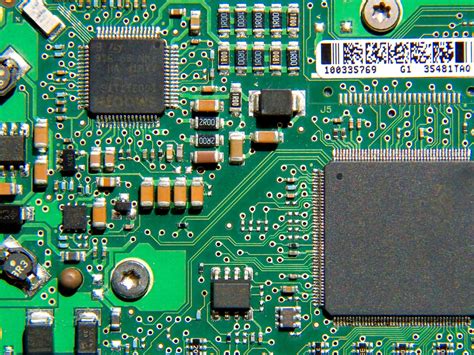
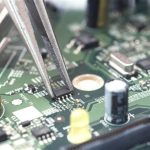
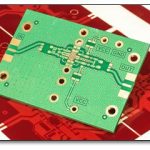
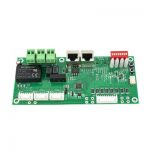
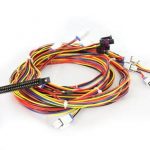
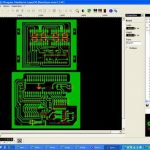
Leave a Reply